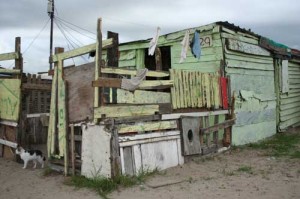Most semesters I’ll have at least a couple of students who are torturing themselves with perfectionism. Sometimes it’s so bad and they get so completely in their own way that they can’t do any work at all. I am well aware that there are some neurological and psychological dimensions to this, but as a sociological response it’s interesting as well.
In my specific experience perfectionism manifests as flailing around standards and expectations. These are the students who beg me to tell them what I want, to give them a checkbox algorithm for success. Turing me up, they say. “I want you to become responsible for an area of investigation and figure out some things about it” does not compute in the language of standards and expectations they are using.
What’s happening is that they’re waiting for someone else to define the domain and the task in a way that makes perfection possible. They’re waiting for this because over and over again, this is what they have in fact gotten. Perfection makes complete sense as a standard when perfection is achievable. In the familiar model, this looks like a test with a hundred questions on it. Although it’s difficult to answer a hundred questions correctly, it certainly can be done and often is. Perfection is a harsh but reasonable standard under these circumstances.
All through our lives engineered linearizations like tests and classes and disciplines and jobs compress and control the situations we’re in, so no one has to answer more than a hundred questions at once. But these tours de force come with some severe consequences. The world is not actually divided up into hundred question domains. There are millions of questions, and they’re irreducibly interrelated. Answering them with some level of understanding requires openness to unstructured learning, and pulling in information and strategies from across multiple domains. Perfection is not possible and therefore not a reasonable standard. We’re pulling together what we can and trying to do better. Although a division of labor and/or the emergent wisdom of markets can simulate that to some degree, such arrangements leave each actor desperately ignorant about how anything actually works.
I may be wrong, but I don’t think you can scaffold the transition from a hundred question mindset to a million question mindset. It’s not a matter of scaling up an existing cognitive routine. The existing cognitive routine is in the way, which is where the flailing comes from once it starts to fail. So I think you have to insistently make it impossible to scale the task down to a hundred questions and let the magnitude of that failure work its magic. At least that’s what I do, and it works often enough that the occasional tragic virtuoso of perfectionism looks like a sad but acceptable price to pay.











